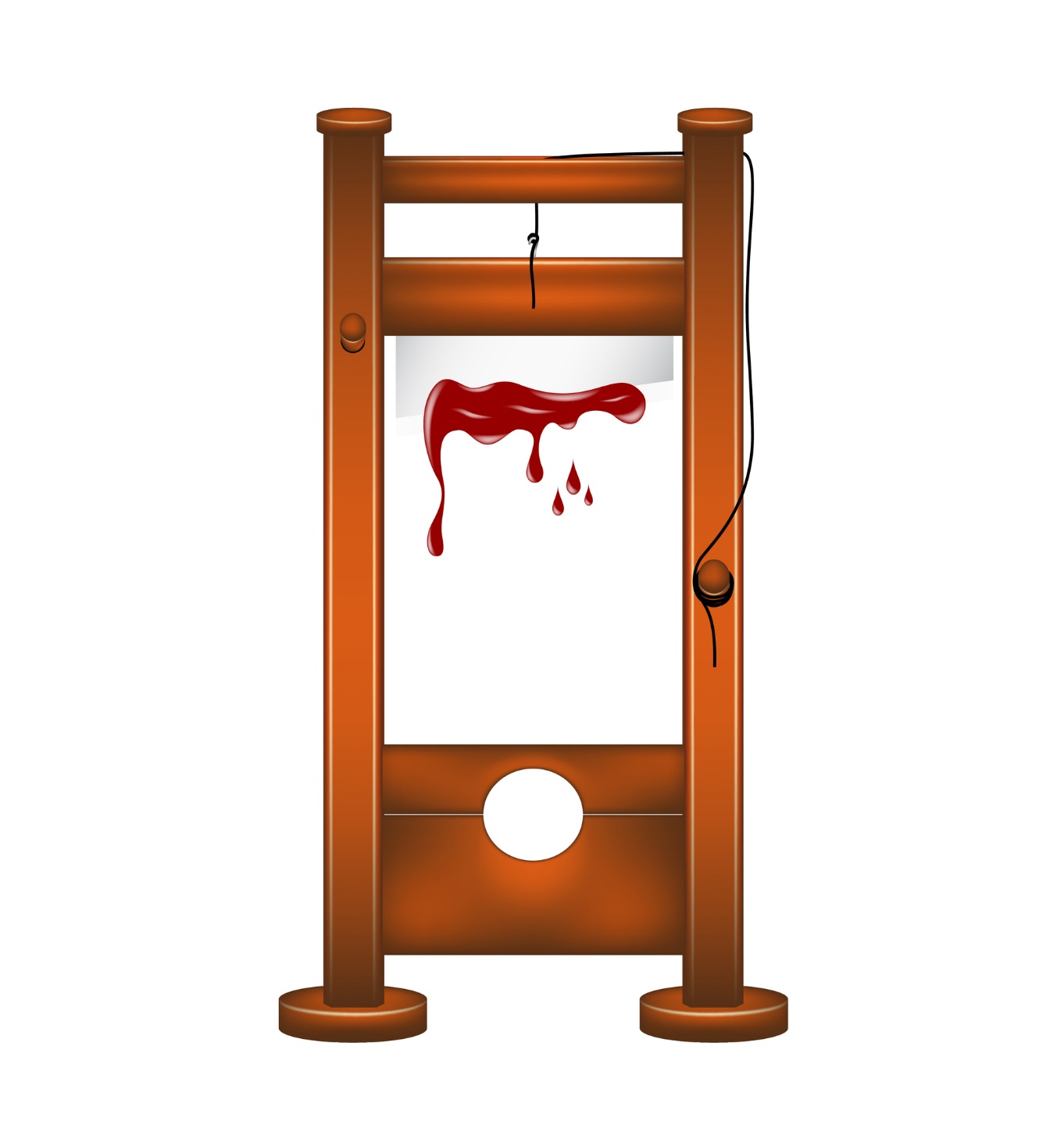BP 216

More than thirty years ago now, my wife and I and our young children left the family, friendships, and familiarity of Minnesota and moved to SoCal—southern California. We had very little idea what adventures lay ahead of us in this new state where we knew no one.
Some of these adventures included earthquakes, mudslides, fires that swept down from the mountains into smaller cities around LA, smog that draped over mountains to the point that you didn’t even know they were there until heavy rain washed the copper curtain away, being the minority racially where we worked, singing “Let It Snow” on December days when it was 75 degrees, and living half an hour from the ocean and two hours from the mountains, the high desert, and Mexico.
The primary adventure that prompted our move to LA was the pursuit of my doctorate in clinical psychology at Biola University. A large part of this adventure, of course, was the academic learning I acquired at graduate school. But an even more amazing part was learning about the heart, mind, and soul of God’s most amazing creation—people. The faculty and staff at Rosemead School of Psychology on Biola campus were amazing as were my fellow students from all around the world and the people we met at our church, then known as Whittier Area Baptist Fellowship.
However, the people who taught me the most during those five years in the Southland were the clients/patients I was privileged to work with.
There was Carol whose son died after she administered a higher dose of pain medication (that he had begged her to give him) to ease his suffering from HIV/AIDS. I still have the mug she made for me to express her thanks for walking with her through the condemning guilt that accused her of killing her son.
There was Nicole who surrendered the knife to me late one night that she had been using to cut herself for years, her way of coping with the repeated sexual abuse that had been perpetrated on her as a girl. She taught me the amazingly sad but necessary (even God-given) power of dissociation that enabled her to escape to fields of flowers as she was being abused in her backyard.
There was the Tree House program for adults that met at the clinic near Pasadena where I completed my internship. These men and women who all suffered from varying types and degrees of schizophrenia—maybe the mother of all mental illnesses–took me into the frightening and distorted world of their minds and helped me understand their unique suffering and how to walk with them on their often-lonely journeys.
Then there was Raul, a thirty-five-year-old man who at one time had seven siblings. When I met him, his presenting issues were deep depression, alcohol addiction, and suicidal ideation—and he no longer had any siblings! Raised in gang territory in east LA, all them had died from overdoses, pedestrian-car accident (his three year old sister, neglected by the parents who were IV drug addicts, wandered into the street one day and was struck by a car), gang violence, alcoholism, or sheer neglect of their bodies.

More than any other person I met while in LA, this dejected man reminded me of the darkness in this world. My main reaction when I was with Raul was to groan internally and feel on the edge of tears. I felt crushed by his pain and suffering.
Abbie was also among those I counseled during my training years in LA county, someone I might diagnose as DID today. This 19-year-old woman (girl) shared just a bit about the flashbacks she remembered during her younger years of Satanic Ritual Abuse (SRA). I didn’t meet with her for very long—it was simply too painful for her to remember what had happened to her. I mainly recall her sharing about the puppies that were carved up as sacrifices and the drawing she showed me of her brain.
The drawing portrayed her brain divided into many different compartments. In the middle of her brain were a group of little men who were busy building walls here, there, and everywhere to shut out terrible memories and excruciating pain. I wonder what happened to her and also Raul. . .
There are so many other people I walked with during those five years. But one seven-year-old boy named Esteban is on my mind today.
As part of my clinical training, I did a practicum at a high school in La Puente in LA County. I remember the first day I drove up the hill from the middle-class neighborhood of La Mirada that was not far from Disney Land and Knot’s Berry Farm and the Angels baseball park where life seemed smooth and even magical at times. When I reached the top of that hill in Whittier and drove down toward the 60 Freeway and the gangland of La Puente, I felt like I was slowly descending into a darkness that was not visual but emotional and spiritual. Yes, I could feel it.
Completing my practicum at the racially diverse high school (primarily Hispanic) was unforgettable. But even more significant to me was working at a small grade school in La Puente for several years. I was hired with government money that had been earmarked for gang and alcohol and tobacco prevention among younger children. I could say so much about learning about the Hispanic culture and the caring people I met there in La Puente, but today I just want to talk about Esteban, the seven-year-old boy.
Esteban was referred to me as the school counselor by his teacher, Mrs. Rubio. She reported that Raul, a bright and happy young boy, had suddenly stopped focusing in class and his academic performance had nose-dived. The previously pleasant boy had even begun to display angry and anti-social behavior. I agreed to meet with this troubled boy.
Several days later, little Esteban (who appeared young for his age) came to my office at the grade school (earlier it had been a closet for janitorial supplies and only had a window high up in the door) and I began to listen to what the young boy was saying through his behavior. Yes, children (even teens) don’t always speak with words but with their actions and attitudes, so I was determined to hear what he was saying without him having to say many words at all.

Fortunately, at the same time I was meeting with Esteban, I was taking a class in grad school focused on play therapy with young children. One of the techniques we explored was using a sand tray to assist in play therapy. Accordingly, I had brought a 3’x3’ tray with three inches of sand in it to the school so that the kids I met with could express their inner world through the medium of sand tray work.
The goal of sand tray therapy is to watch the child (Esteban in this case) play and look for themes in his play that emerge over time. Some schools of thought believe it is important to do some verbal interpretation of what the child is doing with comments like “that dinosaur looks angry” or “I wonder if that little boy is hiding in the sand from somebody.” Other therapists believe it is simply wisest to observe and create a safe environment for the child where he can express everything inside of him—kind of like making the unconscious conscious.
As the repressed emotion or memory surfaces, healing should occur. This healing is called “reparative”, and the therapist is to be sure to look for “reparative motifs” that actually represent changes in the child’s play themes. Some examples of reparative themes are a change from despair to hope, or toward integrating emotions (or people or himself) into a mix of both good and bad instead of splitting them into all good or all bad extremes.
Esteban was very quiet when he first came to me. His silence and even his small nose and mouth reminded me of a cute mouse. I didn’t think reticence was his normal character after the things his teacher had told me, so I wasn’t sure if he was uncomfortable with me because I was a man, or a Caucasian, or an authority figure, or because he was troubled by something else. His little brown eyes seemed to communicate a lot, but I didn’t yet know how to translate their language. I think I saw sadness and anxiety.
The sand tray actually did what it was supposed to do: it opened the door to Esteban’s mind and heart. Themes that I believed I saw in his play therapy were anger, powerlessness, and aloneness. He would throw animals around in the sand tray and grab a horse and pound on other animals with it. He would bury boys and girls in the sand and make comments about how they couldn’t get out and that no one was there to save them.
As I said, the sand tray opened the door, but what amazingly helped me enter this little boy’s inner experience was his drawing. One day when he came to see me, he pulled a sketch pad off my shelf and grabbed crayons. He began to feverishly draw a lady with black hair in a red dress but wouldn’t say who she was. For weeks, he drew the lady. Over and over.
Then came the guillotines. Esteban drew guillotines varying in size from small to huge. Where in the world this seven-year-old boy had encountered guillotines, I could not imagine—maybe some movie he probably should not have seen. Or some cartoon with adult themes. I never found out and it did not matter. What dominated our work together was the lady in the red dress and the guillotines that he said cut off both his head and my head.

There was always blood in the guillotine pictures. His blood and/or my blood. The red crayons in my office were quickly worn to nubs.
Then the day came when I finally realized that the lady he persistently drew wore a red dress because it was covered with blood. When I commented to him that the lady’s dress might be covered with blood, he immediately commented that her head was cut off, too. In ensuing drawings, Esteban, the lady, and I all had our heads guillotined every time the little boy and I met.
So, the play therapy journey went on.
Eventually the day came when Esteban was ready to interpret his play to me. Using the sand tray but primarily his drawings, he told me a vague story about waking up in the middle of one night around Christmas (Navidad) to the sound of a lady screaming. He ran out into the living room only to see the lady dressed in a white nightgown reddened with lots of blood.
Wow. This poor boy obviously had been traumatized by something. I asked Esteban if his mother was still alive, wanting to rule out the possibility of his mother’s murder. (Working in La Puente, my mind often went to thoughts of violence because there was a lot of murder in the city primarily due to warring gangs.) He said his mother was still alive.
Later that day, I called Esteban’s 23-year-old mother to inquire about his story of the woman in red, assuming that the little boy was reporting a real-life event that had occurred in his house. His mother, Cassandra, explained to me that she had undergone tonsil and adenoid removal surgery the previous December but that somehow her stitches had torn free during the night after surgery. She awoke choking on her own blood which she then coughed out onto her nightgown. It was when she ran out of her room in a panic that little Esteban had encountered her.
Little Esteban had to call 911.
For weeks after Esteban’s revelation about “the lady” in his house and my conversation with his mother, the guillotine and the woman in the red dress continued to appear in his drawings. But now, armed with the knowledge of what had happened to Esteban in his house, I made quiet comments to him about how scary it is to see someone covered with blood and how easy it is to think they are going to die.
I may not have been faithful to the recommended pristine technique of sand tray reparative therapy, but I continued to comfort the little boy. I had discerned from my talk with Cassandra that she was a highly anxious mother (what woman wouldn’t be after bearing a child at age 15?) and I deduced that Esteban needed a presence in his life who would be strong, unafraid, and soothing. Esteban had a father, but he was very distracted by work, often travelling for a week at a time with his job. He had been on a work trip on the night of the lady in the red dress.
In coming days, as Esteban continued to draw guillotines and still make random comments about our heads being cut off, I began to comment that it was a good thing that the lady in the red dress was still alive, that the appearance of blood did not have to mean that someone was going to die, and that he was going to be okay.

He was not going to die.
Then one day Esteban faithfully showed up at my office and drew the usual picture of the lady with the black hair (which we both knew was his mother). But this time, he put her in a white dress. There was no red on her clothing—no blood. The blood was gone. From that point forward, he never drew another red dress. Here, then, I saw a major shift in Esteban’s play themes. I recognized it as a “reparative motif.” I was witnessing the healing of this boy’s mind and heart.
The guillotines did not go away even though the blood had disappeared from Esteban’s play. However, they were smaller and not as common.
It was not until the last day of school—and sadly, my last day at the grade school since I was moving on to a different position—that Esteban came into my office and began to draw a head that he identified as mine. My first thought was, “Here we go again. My head has once again been guillotined.”
However, to my surprise, the seven-year-old (who had by now become precious to me) drew a huge head that had been broken open like some Thanksgiving cornucopia. No guillotine was present. Out of the large head flowed gold coins, food, toys, and other good things.
I don’t remember Esteban’s exact words, but he said something like, “Out of your head comes treasure.” In his way, he was telling me that I had been the person who took away the bad things in his head and brought good things in their place. The nightmare of blood, severed heads, and the fear of death had been replaced by the hope of good things for his future.
I will never forget Esteban. I still wonder where he is and how he is doing and if he knows Jesus at his age of 37. I pray that he knows Jesus.
In conclusion, I have two themes that emerge from my own life as I look back on those years in LA. I remember the deep pain and suffering I encountered in the lives of people from the age of seven up to seventy-seven and I still groan.
And I remember the hope of healing that I witnessed in the lives of so many people.

Healing—the gift from God for us. Sometimes the healing is physical, sometimes spiritual, sometimes relational. I thank God that He is the God of all comforts.
So, go and be Jesus to the world. Listen to people’s hearts. Really hear them. Look for the themes in their hearts. Love them—whether a child or a person of a ripe old age. Your presence in their life might alter their trajectory for a lifetime. Possibly even for an eternity.
Even if you have to use a sand tray or a sketch book.
“Blessed be the God and Father of our Lord Jesus Christ, the Father of mercies and God of all comfort, who comforts us in all our affliction, so that we may be able to comfort those who are in any affliction, with the comfort with which we ourselves are comforted by God” ~ 2 Corinthians 1:3,4
Matthew 25:34ff: “Then the King will say to those on his right, ‘Come, you who are blessed by my Father, inherit the kingdom prepared for you from the foundation of the world. 35 For I was hungry and you gave me food, I was thirsty and you gave me drink, I was a stranger and you welcomed me, 36 I was naked and you clothed me, I was sick and you visited me, I was in prison and you came to me.’ 37 Then the righteous will answer him, saying, ‘Lord, when did we see you hungry and feed you, or thirsty and give you drink? 38 And when did we see you a stranger and welcome you, or naked and clothe you? 39 And when did we see you sick or in prison and visit you?’ 40 And the King will answer them, ‘Truly, I say to you, as you did it to one of the least of these my brothers, you did it to me.’”
